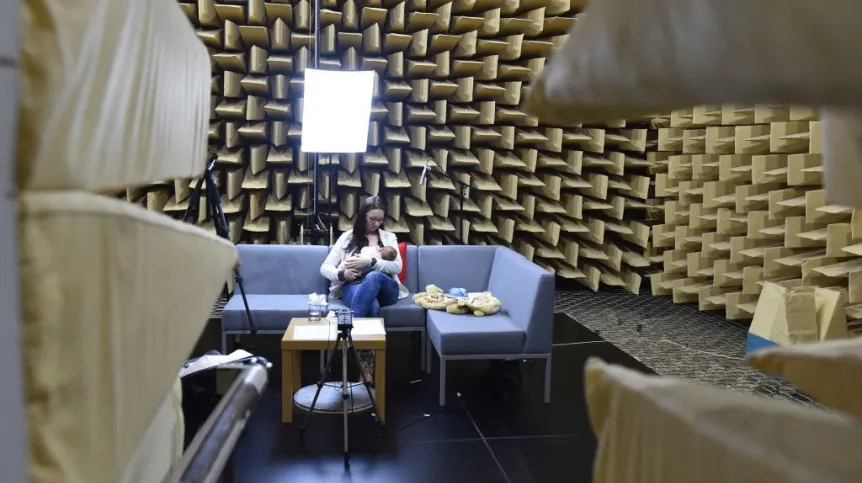
How to tell whether a child suckles due to hunger or just for enjoyment? Young mothers can watch helpful short video prepared and posted online by the scientists from Kraków. The authors emphasize, however, the recording would not replace a consultation with physician or midwife.
The recording is available on the YouTube channel. It owes its excellent sound quality to having been recorded in the anechoic chamber of AGH University of Science and Technology in Kraków.
On the recording, viewers can see and perfectly hear the sounds made by children during breastfeeding - but that\'s not all. Approximately 5 minutes long video also includes commentary of a lactation consultant.
The authors of the project are Marcin Zastawnik, an acoustic engineer from AGH, and Anna Kotlińska, midwife and doctoral student at the Jagiellonian University. In their opinion it is the only recording of this kind available on the Internet. "We looked for similar recordings. However, we have not found any with excellent sound quality" - said Zastawnik.
The aim was to create a video widely available online, which would help especially young and inexperienced mothers tell when their child eats, and when it suckles for enjoyment or due to pain.
On the recording you can hear that during the first minute baby suckles the breast evenly and fairly quickly - the baby stimulates the breast for milk flow. After approx. one minute, you can hear the sounds of more regular suckling and swallowing - the child eats.
"We want to show that contact with the breast is not just feeding. The recording will serve as a kind of a guide, a tool for parents who want to learn more about child\'s contact with the breast. By listening to the sounds that a child makes during feeding, parents will be able to tell whether the child eats or suckles just because he or she wants to be with the mother, wants to smell her, hear her heartbeat, or maybe suckling is a painkiller" - said Kotlińska.
She emphasised that the recording would not replace a physician or midwife consultation. "Our recording is a few minutes long tool available on the Internet to anyone, at any time, but it will not replace specialist\'s advice" - she noted.
Making the film with excellent sound quality was possible thanks to the conditions that the AGH anechoic chamber provides. It is a special room with free field conditions (sound field, in which reflections from the surrounding surfaces are negligible in the test frequency range) thanks to special diffuser-absorber elements applies on walls. This unique reinforced concrete structure has the outer edge of approx. 10 m (approx. 1,000 cubic meters volume). The mass of the chamber is estimated at 600 tons, and the "cube" is mounted on special vibration isolating springs that reduce the transmission of vibration from the nearby road. Due to the placement of wedges also on the floor, researchers in the chamber move on a net stretched half a meter above the wedges.
PAP - Science and Scholarship in Poland
bko/ agt/ mrt/
tr. RL













